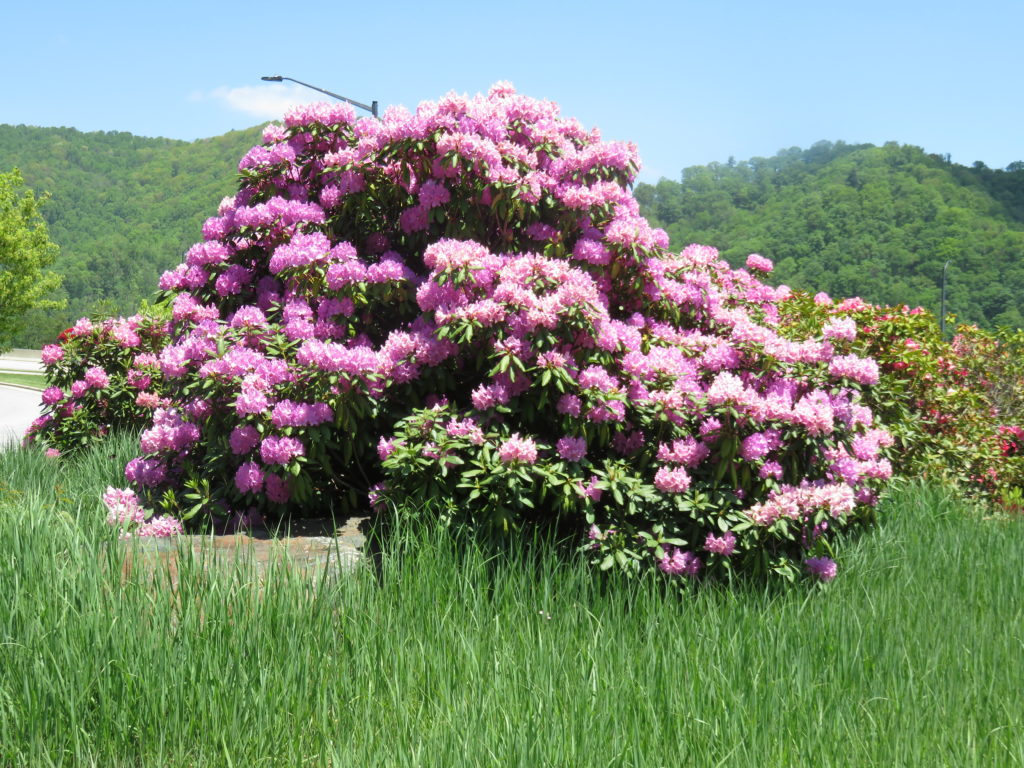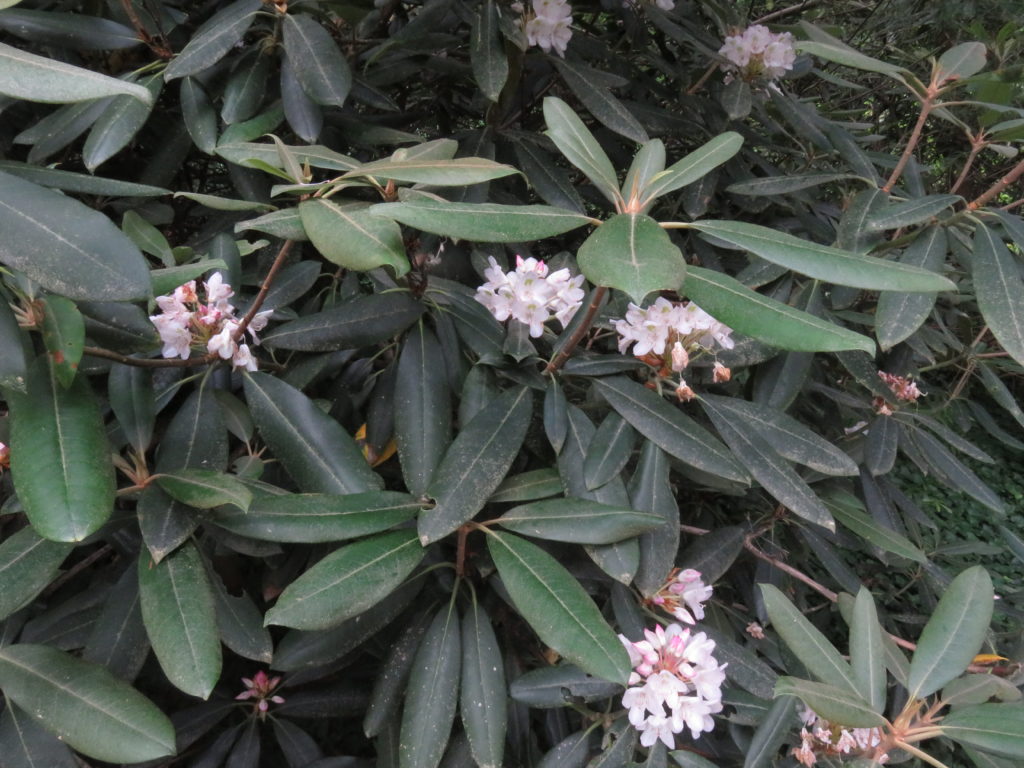
In the U.S., two species of rhododendrons, Catawa (Rhododendron catawbiensis) and Rosebay (R. maximum), are plentiful in the Appalachian Mountain region. Their roots feed in part on the rich humus material in the rocky mountain soils. Over time fallen leaves, twigs, and flower parts decay into additional humus. Humus improves soil aeration and drainage, yet aids in retaining some moisture.
Rainfall in the mountains is more plentiful than at lower elevations where most urban gardeners reside. In the mountains the ground is moist and cooler. Thus, the two basic growing requirements of rhododendrons – abundant moisture and good soil drainage- must be satisfied in warm urban gardens. This is also the secret for growing azaleas and their botanical cousins Mountain laurels (Kalmia latifolia).

Rhododendrons will flourish in urban gardens through proper siting (sun/shade), choosing the best varieties (cultivars), and special care. In warmer urban climes, rhodies prefer exposure to morning sunlight and mostly afternoon shade. You may opt to remove some lower tree branches to allow more light to filter through the canopy. Protect from drying winter winds by planting a hedge or windbreak. Drying winds most often come from a southwesterly direction. Therefore, plant rhododendrons on a northeast slope or the northeast corner of your house.
Soil drainage: If your garden contains heavy clay, construct a raised bed and fill it with fertile garden soil along with lots of compost and/or peat moss, and coarse sand or perlite. Typical bed size may be 5 feet in width and whatever length you have space for.
At the start, fill the bottom of the trench with 6 inches of coarse pebbles or small rocks for improved drainage. Test the soil in the bed to make certain that the soil pH is 6.2 or lower. After planting, if you garden in an urban area, you may want to install drip irrigation, particularly over the dry summer period(s).
Each spring, spread 3-4 inches of an organic mulch such as pine needles or pine bark around the base of each rhododendron. Over time, the decaying mulch will add more humus to the ground to keep shallow-rooted rhodies cool and moist.

 Posted in
Posted in 
